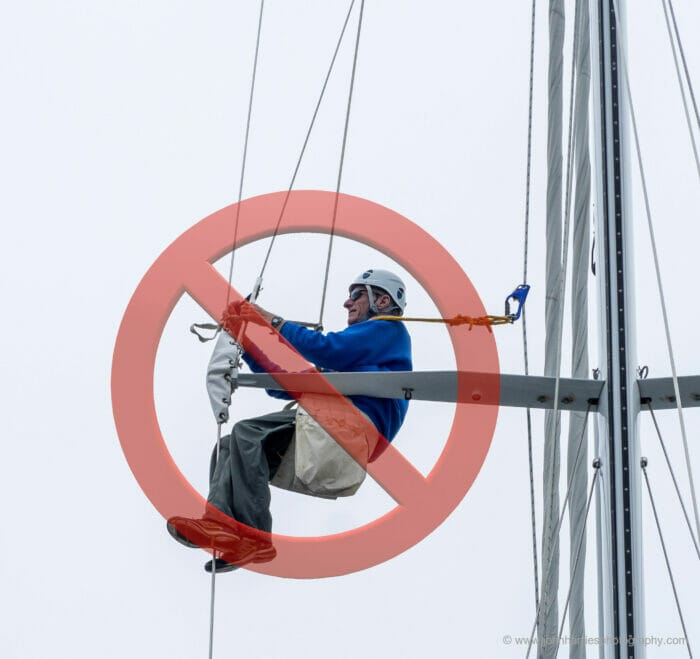
I have quoted Morgan Housel, one of the smartest people in investing as well as one of the best writers, before.
His thoughts about investing often make sense for life, and offshore voyaging.
Here’s Morgan again:
A question I love to ask people is, “What have you changed your mind about in the last decade?” I use “decade” because it pushes you into thinking about big things, not who you think will win the Super Bowl.
I am always so suspicious of people who say, “nothing.” They act like it’s a sign of intelligence – that their beliefs are so accurate that they couldn’t possibly need to change. But I think it’s the surest sign of ignorance and stubbornness.
Morgan Housal, read the whole article
I struggle with staying open and flexible every day, but at least I can answer Morgan’s question in the positive:
- I thought I knew how to manage crew overboard safety. I didn’t.
- I thought I knew how to go aloft safely. I didn’t.
- I used to think I knew how to tighten a bolt. I didn’t, but I do now.
- Over the years (more than 10) I have changed my preferred storm survival tactic five times.
That’s all that comes to mind right now, at least around sailing. Maybe I need to work harder at this!
What about you? Tell us what you have changed your mind about in the last 10 years, in a comment.

Many things. But most of them relate to changing boat types. A 1,300-pound, 27-foot Kevlar catamaran, a 10,000-pound cruising cat, and a 24-foot 1,500-pound trimaran lead to different right answers, for each specific boat.
Age also changes things. I still like speed, but now it is lower on the priority list than not breaking stuff, including me. I’m more careful around shoals. I reef a little earlier, or a lot earlier, depending on how I’m feeling.
Repairs have gotten much easier and more reliable, because I learned from many, many experiences (and mistakes). Which means I must have learned some stuff.
In fact, mental liquidity and that I can keep learning is the primary thing that keeps me sailing. I change boats every 10 years or so, not because they are worn or exactly because I am tired of them, but because I want to learn new stuff from a different boat.
Some specifics, relating to your list:
And some more:
Hi Drew,
What helmet are you wearing in heavy weather? I have been thinking the same thing, but our earlier discussion is making me think that a climbing helmet is not ideal for protection against a boom or mainsheet strike.
Drew,
When you should find the time and inclination, would you care to share some words on how and what you rig to go up the mast using the Camp Goblin?
There are so many things in just one decade, so to choose but one…
I thought I knew how to hove-to, and did so regularly – to make lunch, to reef, to wait for daylight or for the tide to change. But actually I was fore-reaching slowly, without a slick to windward protecting us. One large wave climbing aboard (and my further reading on this site) quickly disabused me of that notion.
It’s maybe why I love sailing so much.
Hi Rob,
I made exactly the same mistake and learned fast: https://www.morganscloud.com/2013/06/01/when-heaving-to-is-dangerous/
So at least you learned without needing a slap upside the head to get the message.
Hi John,
I hope I change my mind many times every day. At least I aim to distrust my opinions. That’s one of the reasons I love this site and read everything as a potential revelation of some misconception I may have. Usually I do find some. Most changes of mind are gradual adjustments, though. It might end up as a 180 degree turn, but often performed in increments we don’t notice.
Related to sailing, my most embarrassing mistaken belief followed by a complete change of mind is more than 10 years ago, but not long enough ago to excuse it: The all too common belief in the catenary curve of chain improving max holding power. My misunderstanding was made worse by trying to explain “the obvious truth” to others, while seen as knowledgeable, and being believed.
I keep that humbling experience vivid in my memory as a tool to hold back my inner besserwisser. It’s only partially successful. 🙂
Hi Stein,
Don’t feel bad, I believed that one, and defended it loudly for years too!